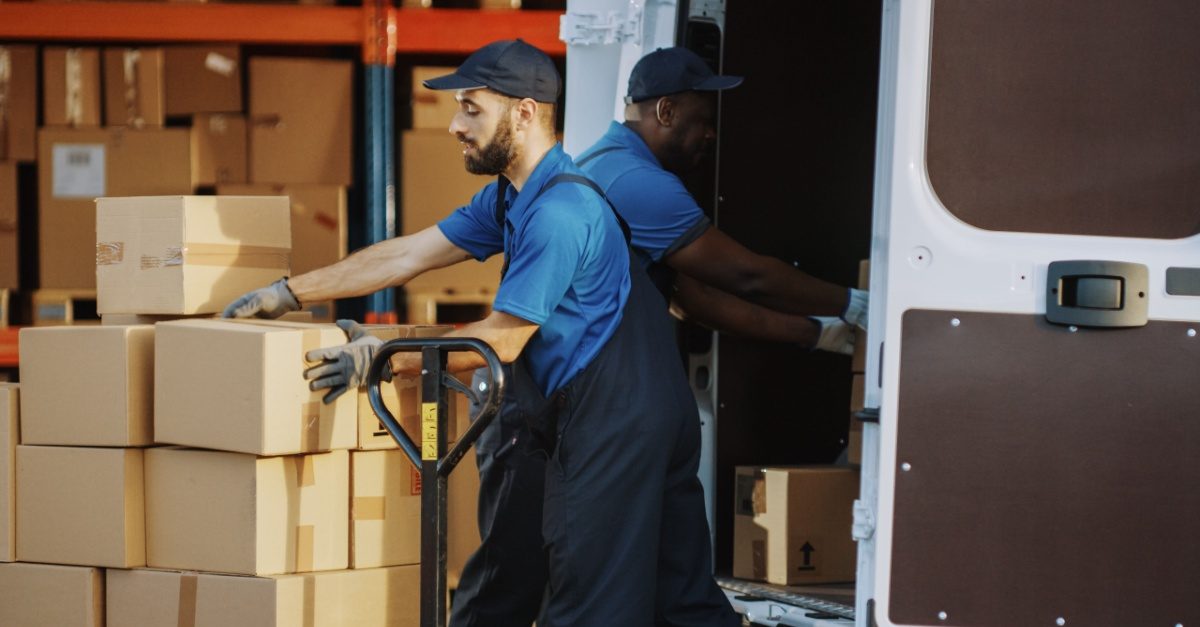
Two-Man Delivery vs. Single Driver: Which Is Right for Your Business?
When it comes to choosing the most efficient delivery model for your business, the decision often boils down to a two-man delivery team or a single-driver solution. Each approach comes with its own operational advantages and challenges. Selecting the right method can have a direct impact on customer satisfaction, delivery efficiency and overall cost-effectiveness.
What Is Two-Man Delivery?
A two-man delivery service involves two personnel—typically a driver and a delivery assistant—handling each job. This model is most common for delivering bulky or high-value items such as furniture, appliances or business equipment. It provides the benefit of additional manpower to handle complex deliveries, navigate difficult environments and ensure items are placed exactly where the customer needs them.
Benefits of Two-Man Delivery
- Enhanced Customer Experience: With two people on the job, customers benefit from a more tailored and efficient service. Items can be unpacked, assembled and positioned as part of the delivery.
- Improved Safety and Damage Control: Heavier items can be moved safely and with less risk of injury or damage. This reduces insurance claims and protects staff wellbeing.
- Professional Image: Having a team arrive can enhance the brand’s image by presenting a professional, organised front.
Challenges of Two-Man Delivery
- Higher Operational Costs: Labour costs are doubled, and vehicles may require more space and fuel. This model is more expensive to run than a single-driver operation.
- Scheduling Complexity: Managing two staff members per delivery increases the complexity of logistics, especially during peak periods.
What Is a Single-Driver Model?
A single-driver delivery system involves just one person handling the entire delivery process, from driving to unloading. This model is widely used for smaller parcels, standard retail goods and deliveries where no specialist handling is needed.
Benefits of a Single-Driver Model
- Cost-Efficiency: One of the main advantages is reduced overhead. Fewer wages, smaller vehicles and lower fuel consumption can significantly decrease costs.
- Greater Flexibility: A single driver can often complete more deliveries in a day, especially in urban areas where quick drop-offs are possible.
- Simplified Scheduling: Coordinating schedules is easier, making route planning more agile and responsive to last-minute changes.
Limitations of the Single-Driver Approach
- Limitations in Handling: Large or heavy items may be difficult—or even unsafe—for one person to move alone, increasing the risk of injury or product damage.
- Limited Customer Interaction: There’s typically less time for customer engagement or additional services, which may affect satisfaction in certain sectors.
Which Model Is Right for Your Business?
The choice depends on several key factors:
- Nature of Products: If your goods are heavy, high-value or fragile, two-man delivery offers more reliability. For smaller, less complex deliveries, a single-driver system may be sufficient.
- Customer Expectations: High-end customers may expect a white-glove service that includes delivery to a specific room, setup and packaging removal—services more feasible with two people.
- Budget and Scale: Smaller businesses might lean towards single-driver models due to cost. Larger firms, or those with customer experience at the forefront, may see value in the two-man model.
- Delivery Environment: Urban flats, limited access areas or properties with multiple staircases may require the additional support of a second person.
Conclusion
Choosing between two-man and single-driver delivery models comes down to balancing efficiency, cost and customer satisfaction. By carefully considering your product type, customer base and delivery locations, you can determine the model that best aligns with your business needs—while maintaining a strong, safe and professional delivery operation.
Author Bio:
This article was submitted by Higher Jump, a best logistics in uk specialising in reliable two-man delivery solutions nationwide. Higher Jump supports businesses across various sectors including retail and e-commerce, offering tailored delivery options designed around safety, efficiency and service quality. To learn more, visit www.higherjump.co.uk.

With such importance placed on successful logistics operations within the supply chain, at The Institute of Supply Chain Management (IoSCM) we offer a range of professional qualifications in logistics and transport, each carefully designed to match modern businesses’ needs and upskill professionals at all stages of their logistics careers.
